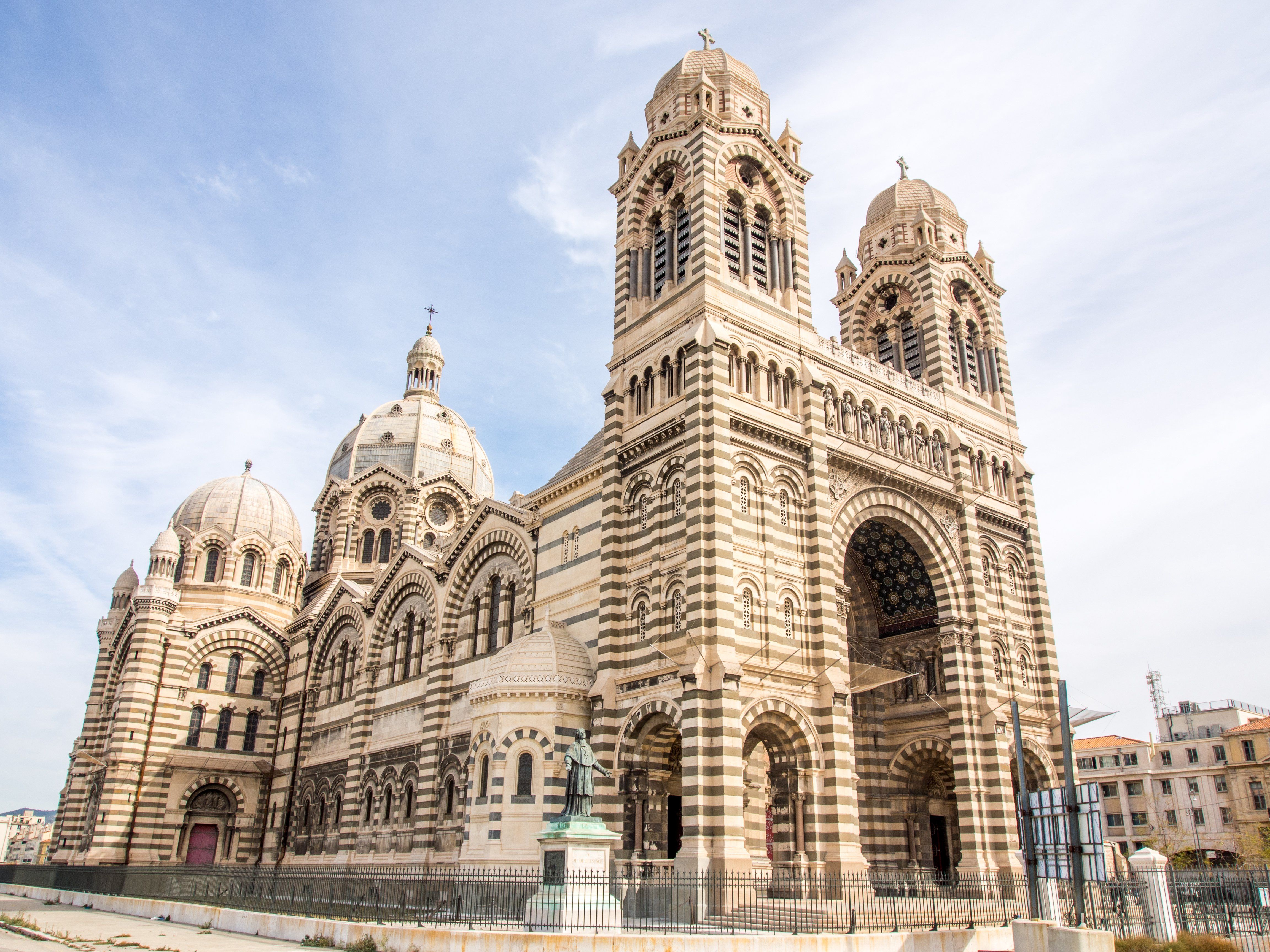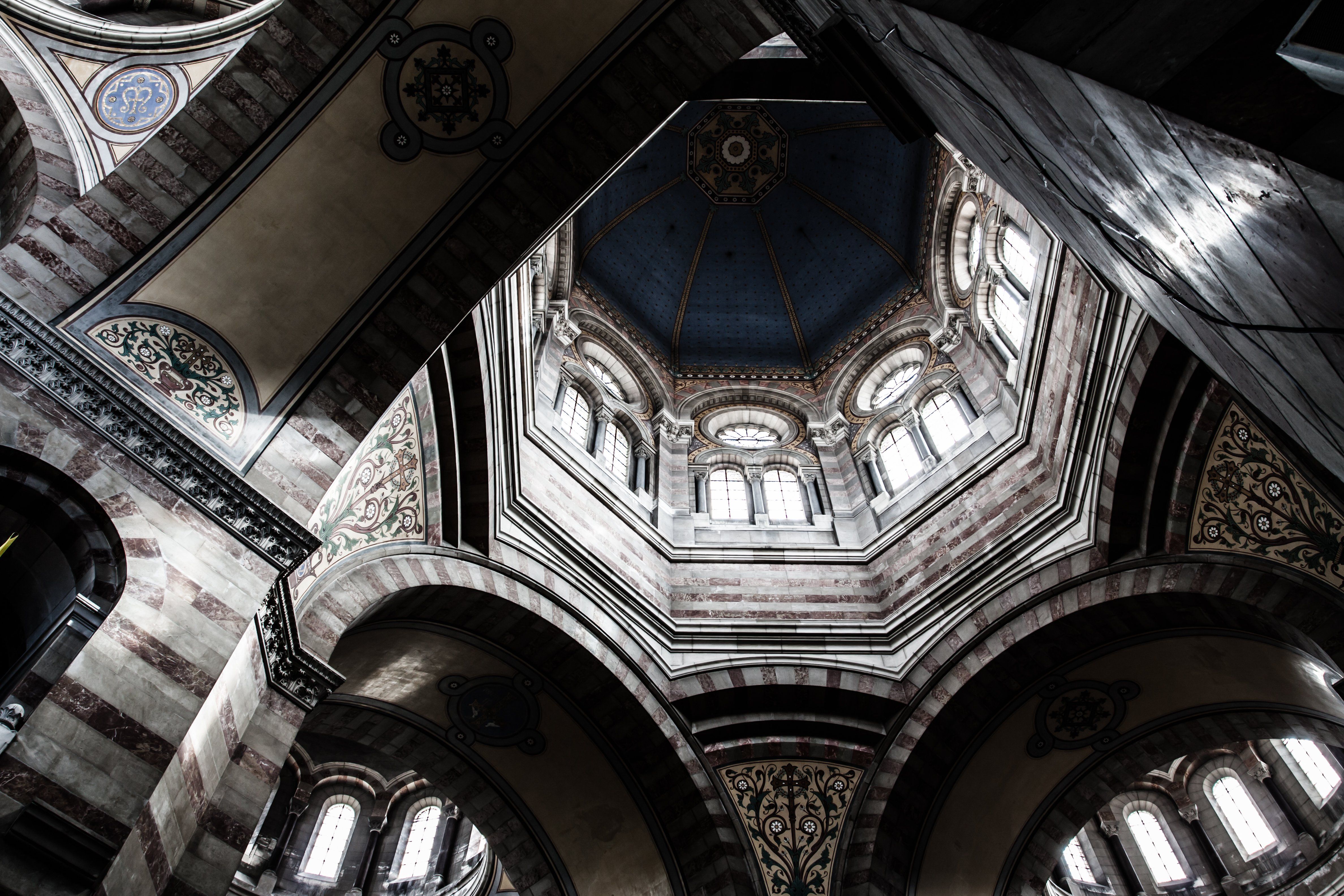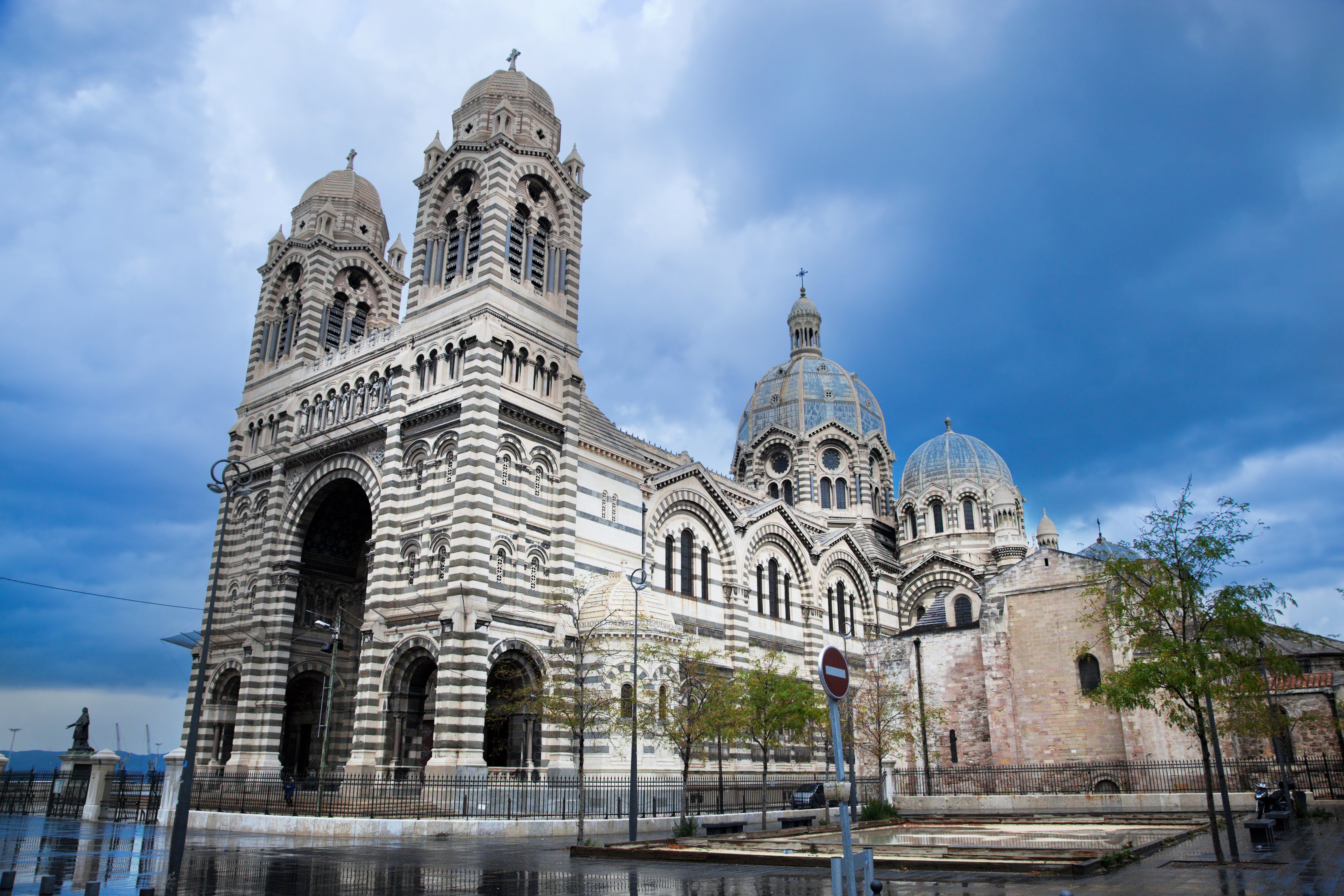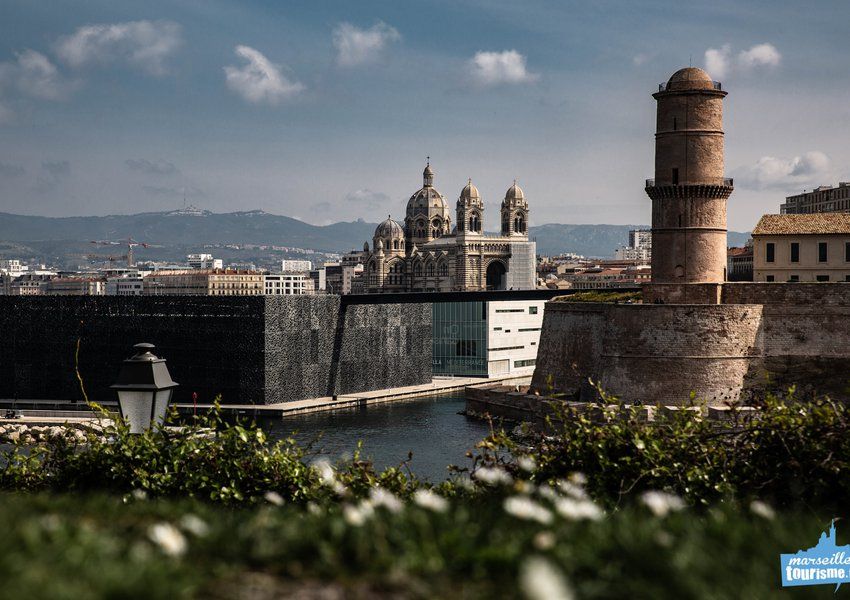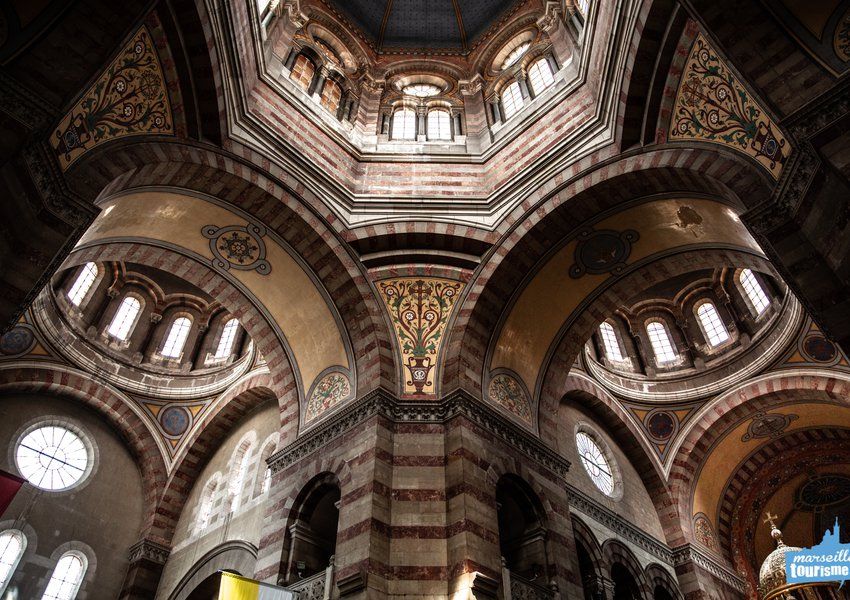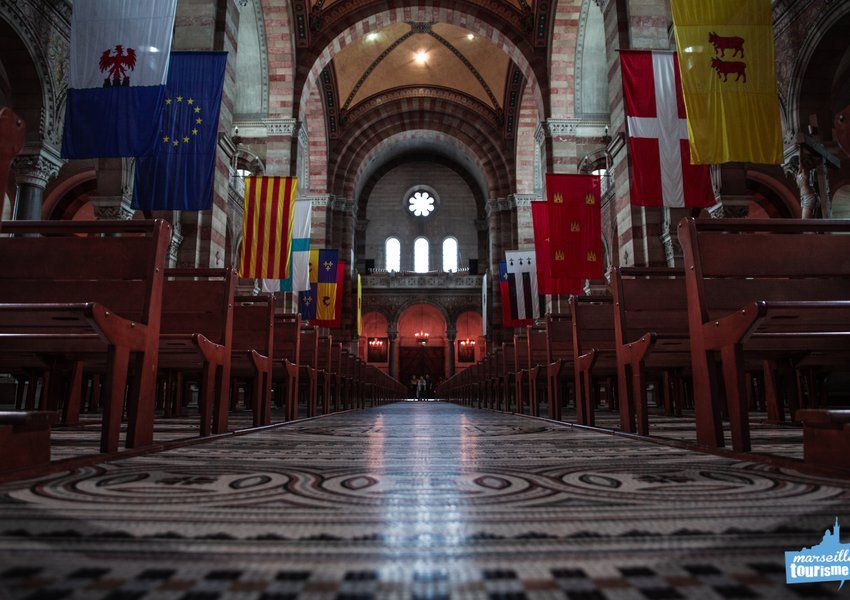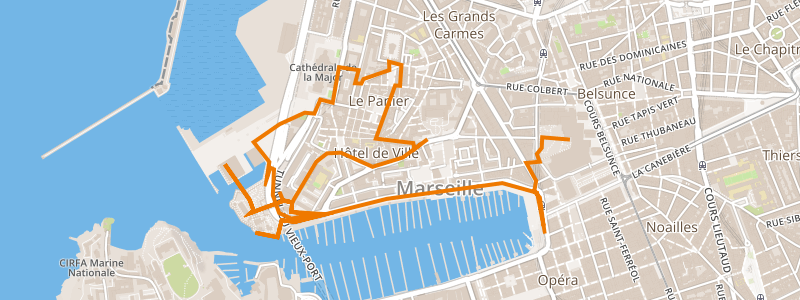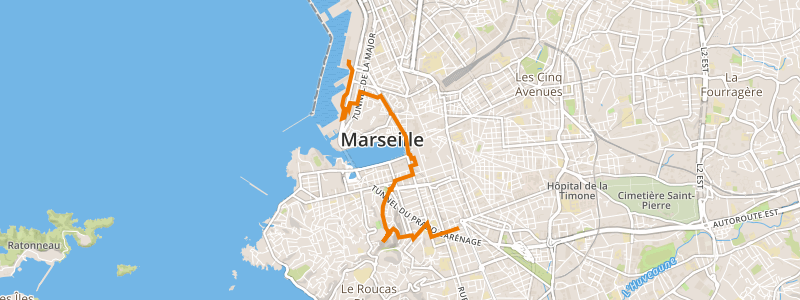The Cathedral of Sainte-Marie-Majeure
The Cathedral of Sainte-Marie-Majeure is located outside the city center, on an esplanade, between the Old Port, Le Panier and La Joliette districts. Called Cathedral of La Major by the locals, it is located a stone's throw from the MUCEM and the Fort Saint Jean.
It is one of Marseille's emblems because the Cathedral of the Major is unique and represents all the power of the city. It is the ideal place to pray in Marseille.
It is the only cathedral built in France in the 19th century. Its spectacular dimensions are similar to those of St. Peter's Basilica in Rome, which allows it to receive up to 3,000 people! This excessiveness was intended to show the power of the Phocaean city, visible from the sea.
Built in a Byzantine style, it is one of the largest churches in France. It was built over 40 years, between 1852 and 1893, when Marseille was the first port in France and was the stopover point for ships from all over the world.
An architectural jewel
The Cathedral of La Major is actually made up of two churches that have been somehow superimposed: the old and the new Major. It is built on an esplanade at the entrance to the port and close to the base of the original Marseille where religious buildings have been built since the 4th century.
The old Major is the oldest church in Marseille. It was built in the 4th century before being rebuilt in the 11th and 12th centuries after the Saracens' attacks. It is a cathedral of Romanesque architecture built with pink stones from the quarries of La Couronne. It is composed of a choir, a vault with a dome and a half dome. The bell tower was later added in the 14th century.
The construction of the new Cathedral of the Major began on September 26, 1852. The first stone was laid by Napoleon III himself! The construction took more than 40 years to complete in 1893.
During the construction of the new cathedral, a Palaeo-Christian baptistery was discovered. It dates from the 5th century. The square-shaped building includes an altar and is decorated with magnificent mosaics.
The Major combines Roman and Oriental styles, thus opening a cultural door to the East.
It also has bell towers and domes. Once inside, you can admire its unique and majestic architecture: the Byzantine arcades, statues and magnificent mosaics. The materials chosen are equal to its excess: white marble from Carrara, porphyry, onyx from Italy and Tunisia, mosaics from Venice and green stones from Florence.
Under the arches, 7 statues represent Jesus, surrounded by 3 of his apostles: Peter, Paul and Lazarus, and 3 of his disciples Martha, Maximin and Mary Magdalene. Finally, on the esplanade is the statue of Monsignor de Belsunce, an emblematic figure of the period of the Great Plague of 1720.
Several architects followed one another throughout the construction. Léon Vaudoyer, father of historicism, designed the Latin cross plan in a Romano-Byzantine style. In 1872, Henri Esperandieu replaced him, until 1874 when he was himself replaced by Henri Antoine Révoil, who finished the cathedral's construction.
He officially gave the keys to Bishop Jean-Louis Robert on November 30, 1893.
The final dimensions of the Cathedral of La Major make it one of the largest cathedrals in the world: 142 meters long, its towers 60 meters high, its nave 20 meters high and its central dome that stands at 70 meters high and more than 17 meters in diameter. It bears witness to Marseille's history and was classified as a historical monument in 1906.
Today, you cannot just visit Marseille without marvelling at La Major.
